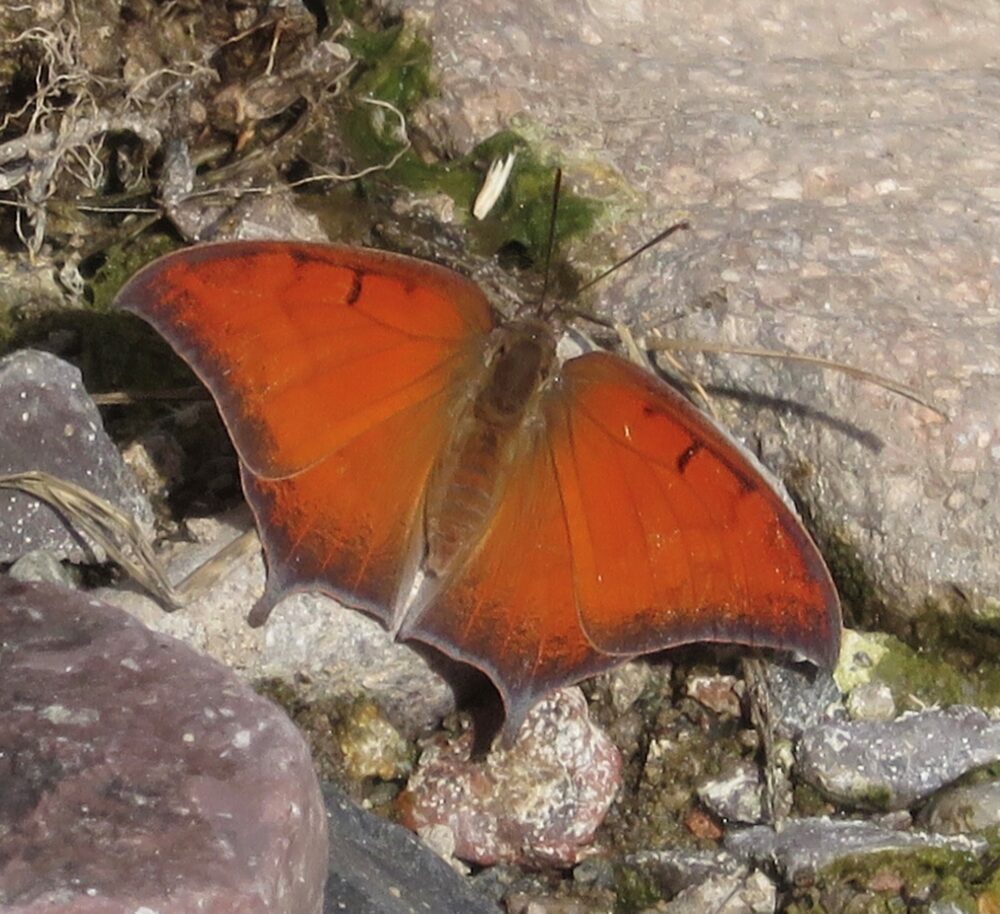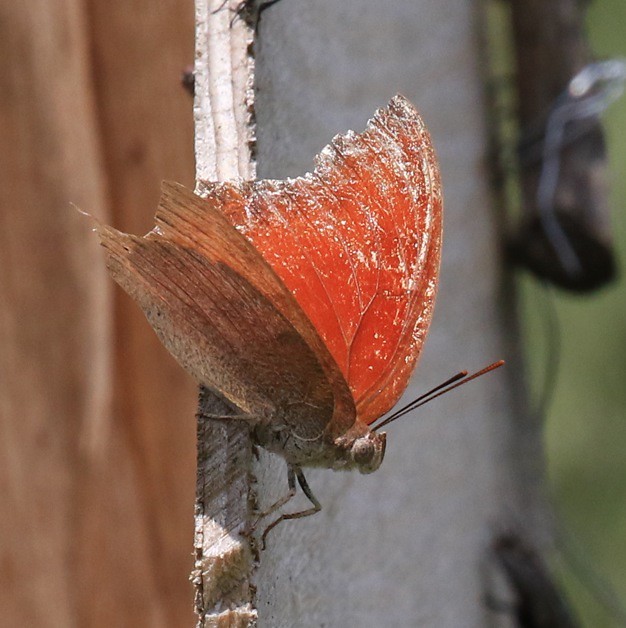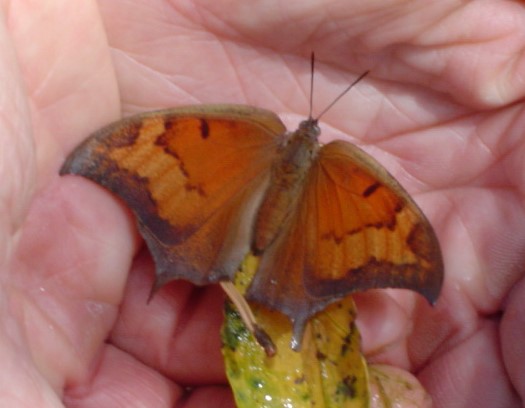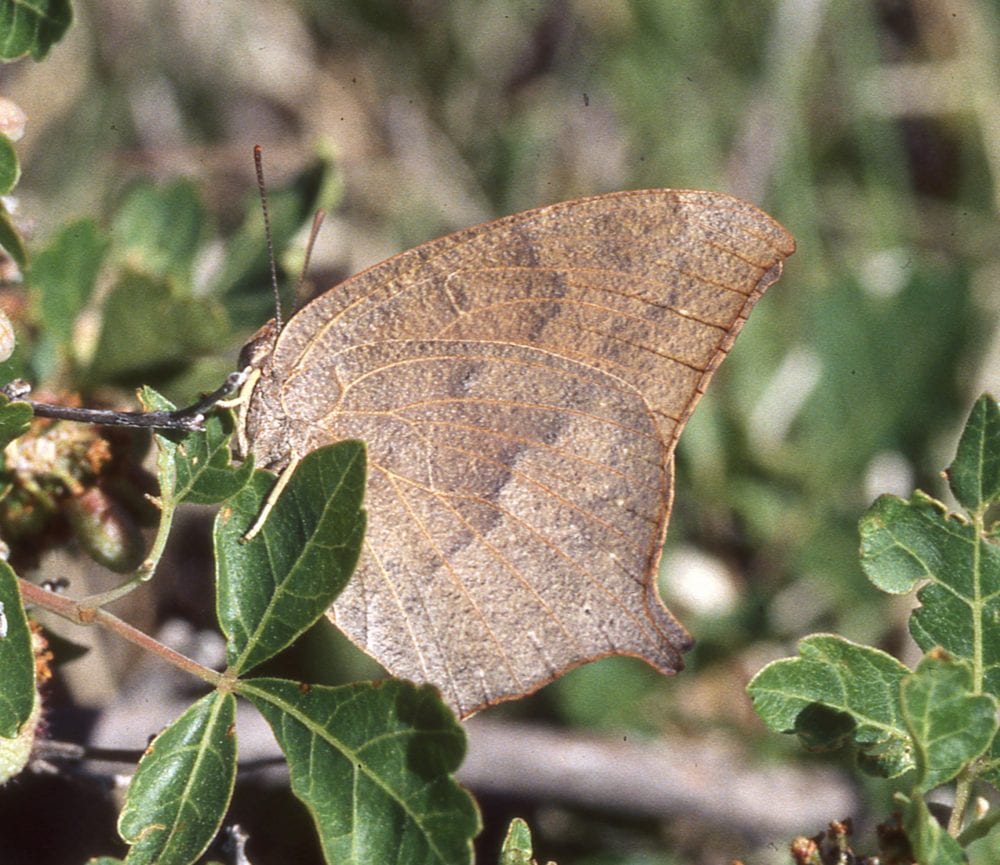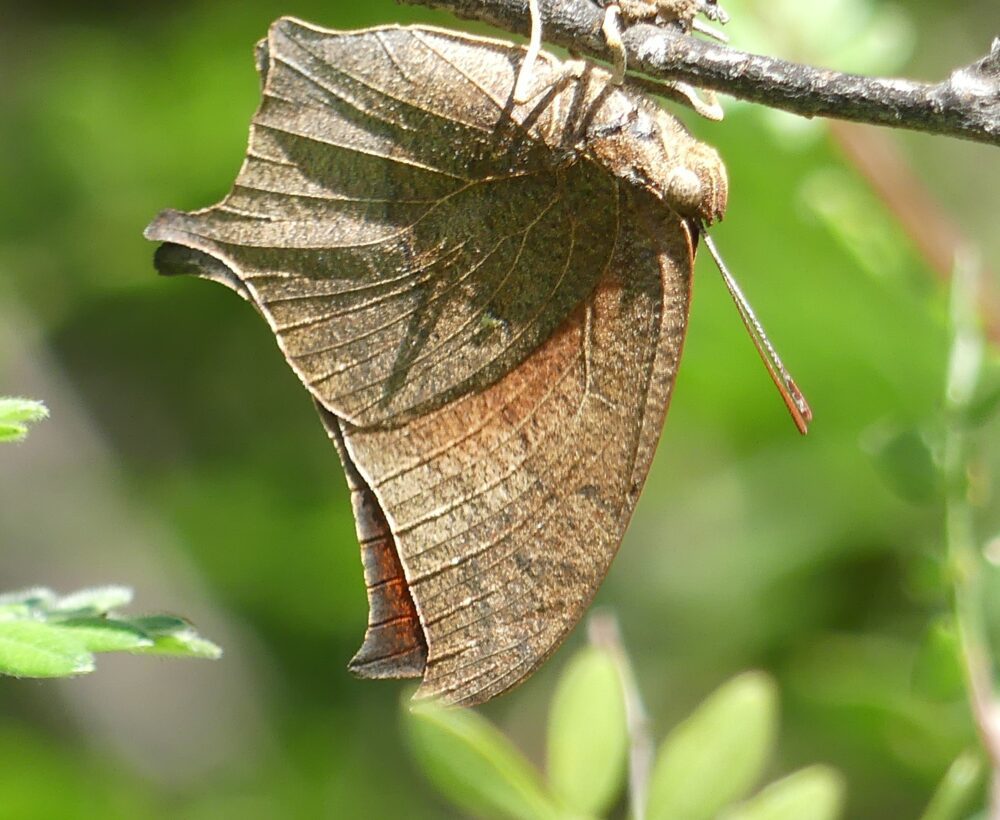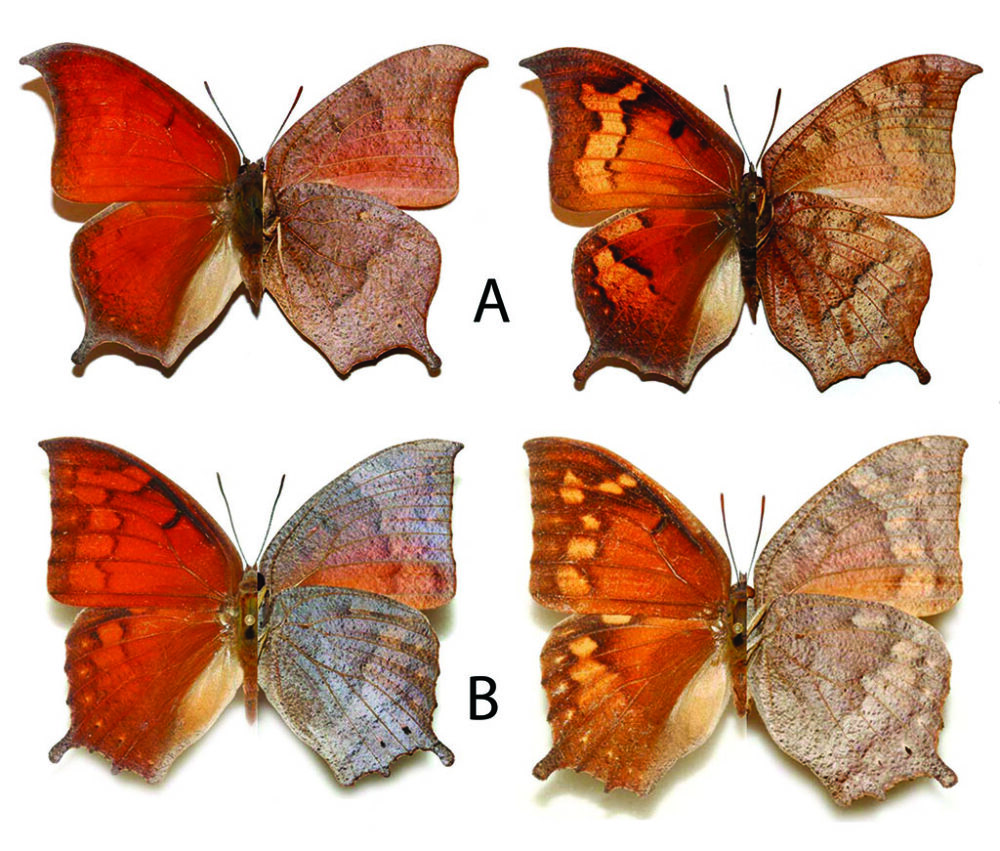by Steven J. Cary and Michael E. Toliver
The Brushfoots (Nymphalidae). This family is our second richest in terms of number of species and perhaps the most variable in terms of sizes, colors, patterns and behaviors. Despite the obvious differences in wing morphology, almost all members share a unifying structural character: on adults, the forelegs are reduced to tiny, brush-like structures, leaving only four functional legs. The exception that proves the rule is female Libytheinae, which have functional forelegs, emphasizing their ancestral status. Many of our most familiar butterflies are members of this family. Pursuant to Pelham’s (2023) catalog, we have ~100 species in ten subfamilies distributed as shown below. Other works may arrange, lump, or divide families in other ways. Updated June 26, 2023
Leafwings (Nymphalidae: Charaxinae). The Leafwings are abundant and widespread in tropical latitudes, but we have only two species in New Mexico. Adults are brightly colored dorsally, but excellent dead-leaf mimics when wings are closed. Adults are strong, agile flyers. Larvae eat Euphorbiaceae.
- Tropical Leafwing (Anaea aidea)
- Goatweed Leafwing (Anaea andria)
Anaea aidea (Guérin-Méneville [1844]) Tropical Leafwing (updated December 10, 2023)
Description. Anaea aidea is dark orange above. Males have a darker wing border and a forewing cell-end bar. Female uppersides have a dorsal hindwing marginal band of light spots and the postmedian dorsal forewing band is light orange. Undersides resemble dead leaves. The hindwing margin is gently serrated. Hindwings sport two tails, one of which (very stubby) appears between the longer tail and the anal angle. That stubby tail distinguishes Tropical Leafwing from its very similar cousin – the Goatweed. Range and Habitat. Tropical Leafwing inhabits subtropical woodlands in the Caribbean and Mexico. Its range includes the extreme southern US. It is typically a stray in southern New Mexico (counties: Be,Ch,DA,Ed,Hi,Le,Lu,Ro,Si,Un), although it often breeds here seasonally below 5000′ elevation. Life History. Larvae eat Euphorbiaceae, chiefly Croton species. Flight. Tropical Leafwings are multivoltine where climate allows. New Mexico records begin February 26 and linger to December 13, suggesting up to three broods per year. Adults perch in and patrol around deciduous trees in desert oases, stopping to feed at tree sap or to siphon moisture from damp soil. Anaea aidea sometimes wanders north. Comments. Repeated year-round observations in Dona Ana County combined with solo sightings north as far as Bernalillo and Union counties suggest that breeding may now be a routine phenomenon in extreme south-central New Mexico, with seasonal vagrants occasionally charging north from there.
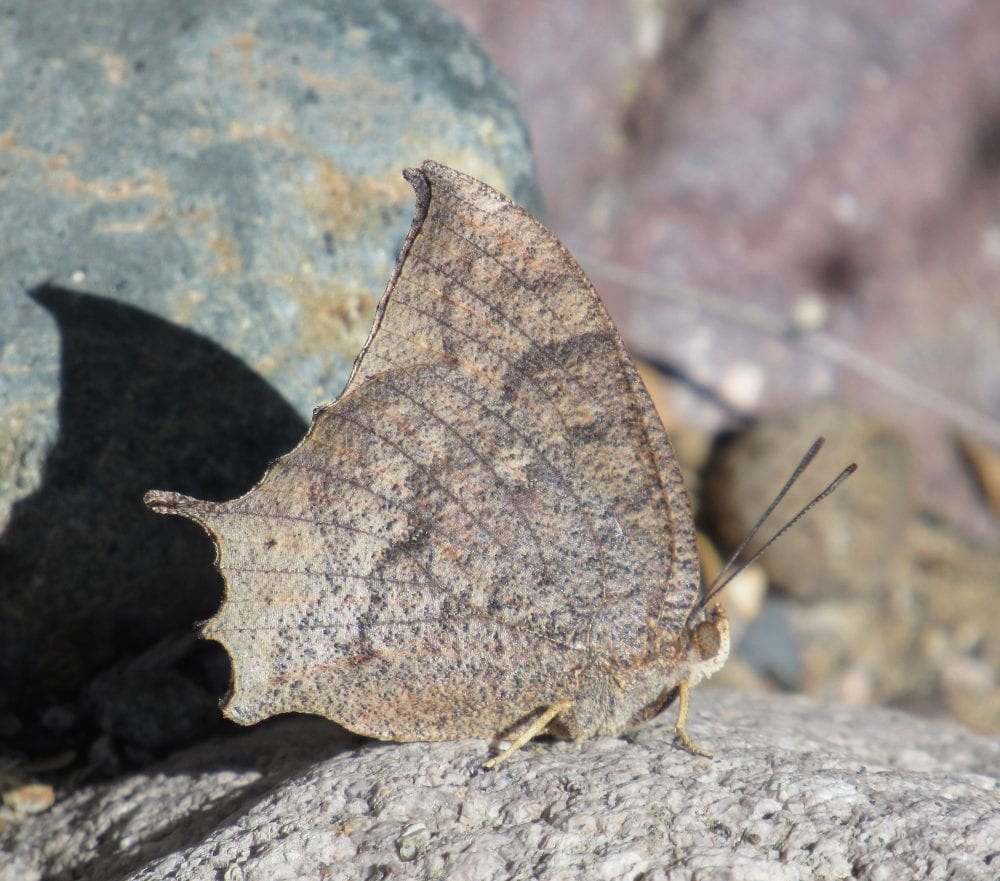
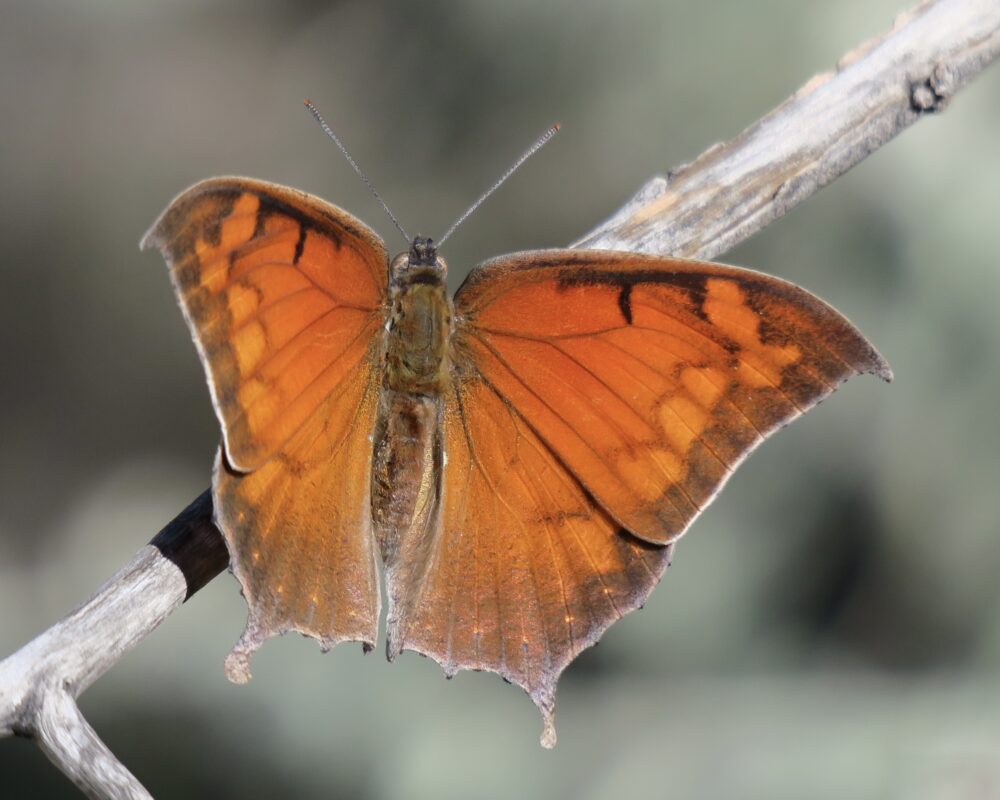
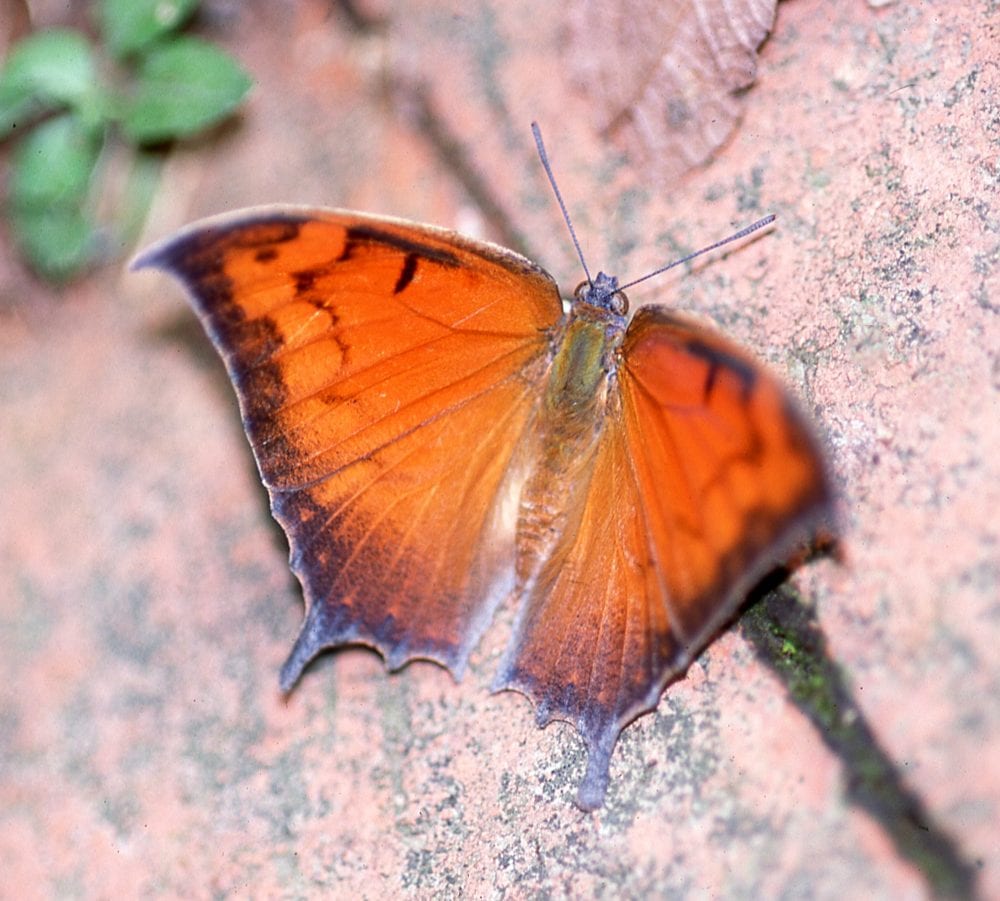
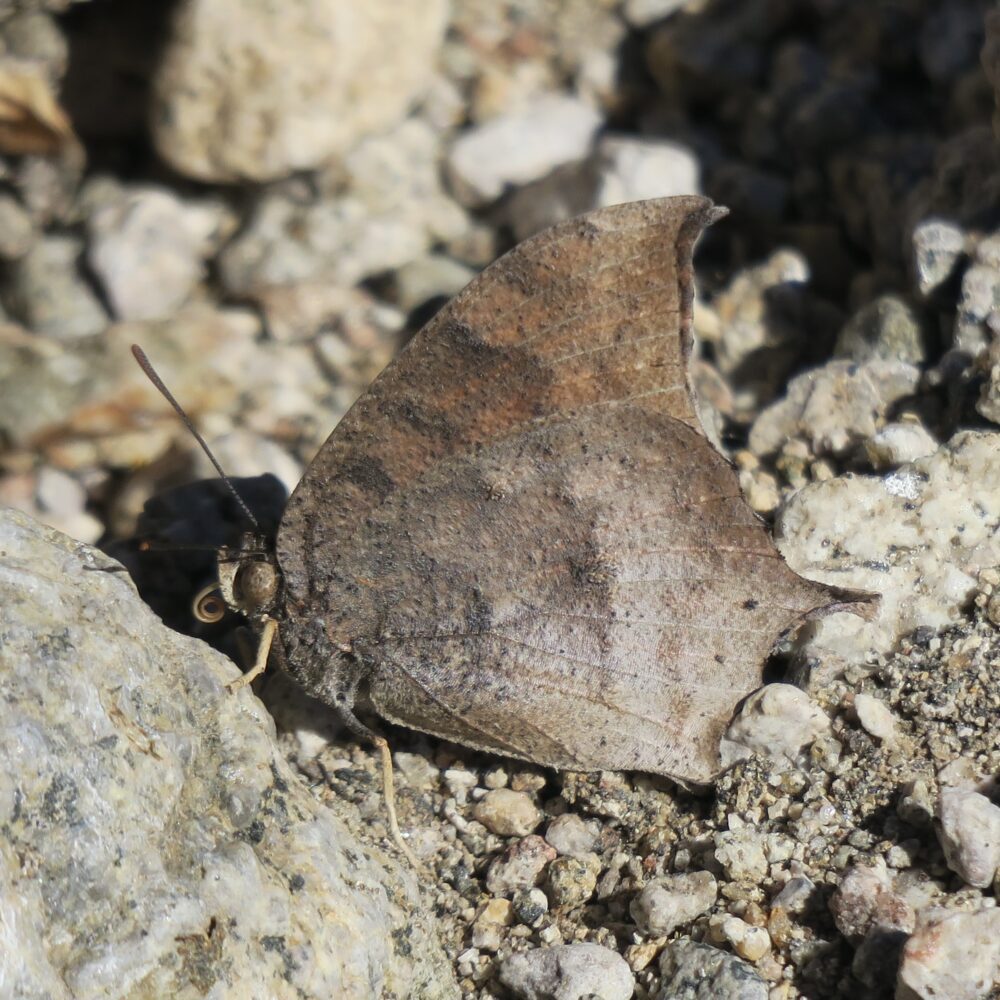
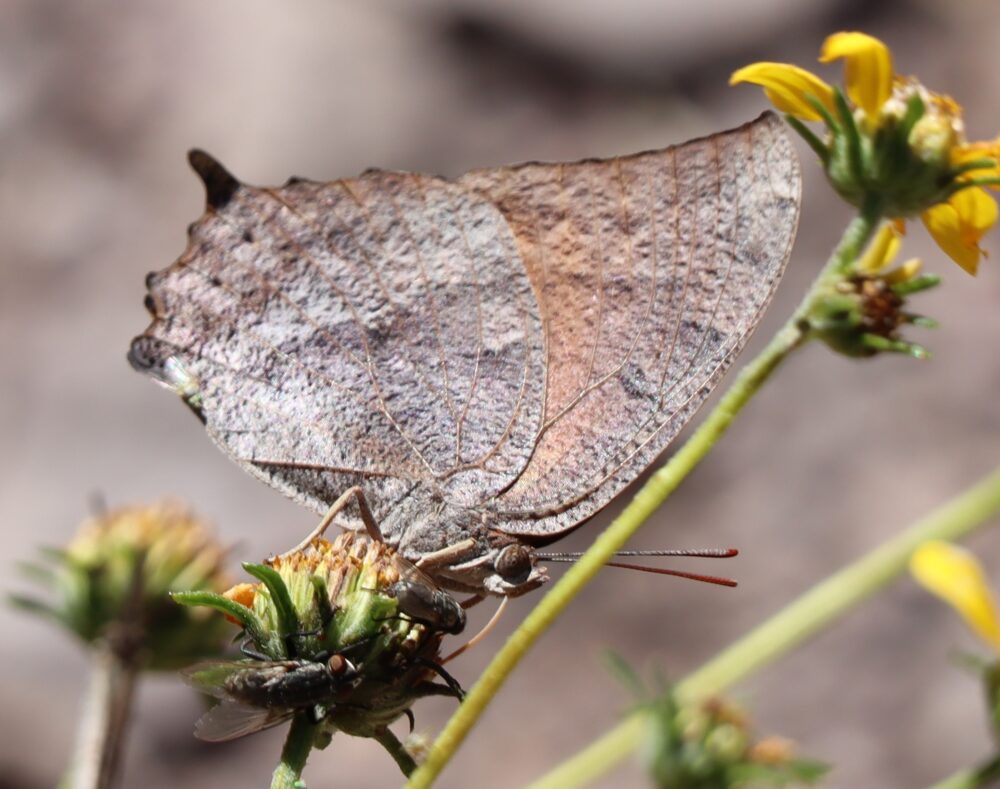

Anaea andria Scudder 1875 Goatweed Leafwing (updated December 12, 2023)
Description. Goatweed Leafwing males are vivid, spotless orange above. Female uppersides have a cell-end black spot and a banded appearance. Undersides resemble dead leaves. Compared to Tropical Leafwing, the hindwing margin is smoother and lacks the second tail. Range and Habitat. Goatweed Leafwings live from Colorado to Indiana, south to Florida and Arizona, then south well into the Neotropics. In New Mexico it occurs statewide but for our northwest quadrant (all counties but Ci,LA,MK,RA,SJ) preferring Upper Sonoran scrubby canyons from 4000 to 7500′ elevation. Life History. Larvae eat crotons (Euphorbiaceae). Scott (1992) found an empty larval nest and adults on Croton texensis near Mangas Springs (Gr) and that is presumed to be the primary host for Goatweed Leafwing in New Mexico. Adults overwinter. Flight. Anaea andria has two to three flights in New Mexico spanning March 3 to November 7. The summer brood flies June to August. Their young fly September to October, hibernate through winter, then fly and mate from March to May. Adults are very tree-oriented; they siphon tree sap and perch in trees to emulate dead leaves. Comments. Anaea andria was first reported from New Mexico when Harry Kendon Clench found it at Sitting Bull Falls (Ed) on 12 September 1960.
